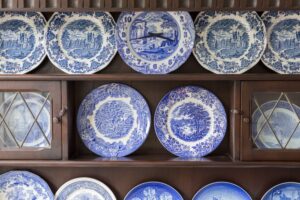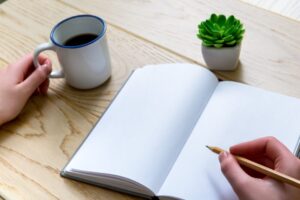In an era where minimalism and essentialism are becoming increasingly popular, it’s interesting to observe the purchasing habits of different generations, especially the Baby Boomers. Born between 1946 and 1964, Baby Boomers have witnessed remarkable economic and technological changes throughout their lifetime. However, despite the shift towards more practical spending habits, many of this generation continue to buy certain unnecessary products and services, highlighting a blend of nostalgia, brand loyalty, and a distinct lifestyle preference. Here’s a look at 14 non-essential items Baby Boomers continue to buy and why.
1. Traditional Print Media

Despite the digital revolution, many Baby Boomers remain loyal to traditional print media. Newspapers, magazines, and books in their physical form have a certain nostalgia and tactile pleasure that digital versions can’t replicate. This generation values the ritual of reading a newspaper with their morning coffee or flipping through the pages of a hardcover book, making these items cherished non-essentials in their daily lives.
2. Landline Phones

In an age where smartphones dominate, the landline phone is a symbol of simpler times for many Baby Boomers. Per a study by Marketwatch, about half of boomer households have a landline. This generation often prefers the reliability and familiarity of landline phones, citing clearer call quality and the absence of the need to constantly upgrade as key reasons. For them, landlines are not just about making calls; they’re about maintaining a connection to the past.
3. Physical Photo Albums

Digital photography has revolutionized the way we capture and store memories, but nearly half of Baby Boomers continue to cherish physical photo albums. There’s a certain joy in physically holding memories, flipping through pages, and recounting stories that digital albums can’t quite replicate. For Boomers, these albums are more than just storage for photos; they are treasure troves of family history and legacy.
5. Vinyl Records

The resurgence of vinyl records isn’t just a trend among the younger generations; Baby Boomers are rediscovering their love for vinyl, too. According to survey organization yougov, nearly 36% of Boomer households – the most of any age group surveyed – said they are willing to spend money on vinyl records. For many Boomers, vinyl records are not just about the music; they’re about the experience of playing a record, the artwork, and the richer, more authentic sound. This return to vinyl is a blend of nostalgia and a desire for a more tangible connection to music.
6. Collectible Figurines

Collectible figurines, especially those from Boomers’ childhoods or favorite historical periods, continue to be popular among this generation. Whether it’s porcelain dolls, model cars, or figurines from beloved TV shows or movies, these items represent a piece of history and personal interest that Baby Boomers love to surround themselves with. The reason this is the case is that Boomers inherited the propensity to purchase collectables from their parents, the silent generation (1925 to 1945) and came of age during a period of economic expansion, giving them the financial wherewithal to purchase collectibles.
7. CD Collections

Much like their affection for vinyl, Baby Boomers often maintain extensive CD collections. These CDs are not just about the music; they’re about the artwork, the liner notes, and the act of choosing and playing a CD. For Boomers, this collection is a personal music library that they’ve curated over the years, filled with memories and favorite tunes.
8. Decorative Collectibles

Baby Boomers have a penchant for decorative collectibles. Items like commemorative plates and limited-edition artwork might not serve a functional purpose, but they hold sentimental value and aesthetic appeal. These collectibles often represent personal interests, travels, or significant life events, making them cherished possessions.
9. Gardening Tools and Décor

Many Baby Boomers have a deep appreciation for gardening. This is partly due to Boomer’s concerns about clean living and healthy aging. This gardening appreciation leads to the purchase of various non-essential gardening tools and décor. From specialized pruning shears to decorative garden stakes and wind chimes, these items enhance the gardening experience and the beauty of their outdoor spaces.
10. Paper Planners and Journals

In general Boomers have higher trust in print media than digital media. As a result and despite the plethora of digital planning tools available, there’s a significant number of Baby Boomers who prefer the tactile experience of paper planners and journals. Writing down appointments, thoughts, and to-do lists by hand offers a level of engagement and mindfulness that digital devices can’t replicate.
11. Antique Furniture

Unlike other generations, Baby Boomers are more likely to have antique furniture. This is due to several reasons. Boomers, unlike millennials or Gen Z are more likely to live in large suburban homes, and therefore have room for larger antique pieces. Boomers also tend to inherit the household goods from their parents, the silent generation, who favored antique furniture.
For Baby Boomers, antique furniture is also about the aesthetics of the furniture – antique furniture is owning a piece of history. These items often remind Boomers of their childhood homes or represent an era they admire, making them valuable non-essential purchases.
12. Specialty Teas and Coffees

The Baby Boom generation has traditionally preferred basic, functional beverages to fancier or prepared products. However, this is changing. Baby Boomers are increasing concerned about their health and are therefor more interested in specialty teas and coffees.
This changing trend is also driven by changing life circumstances. Boomers are largely in retirement and are therefore more willing to make smaller expenditures on luxury. So for Boomers these are not just beverages but experiences to be savored. From rare tea blends to gourmet coffee beans, these purchases reflect a desire for quality and a moment of luxury in their daily routines.
Why These Non-Essential Items Are Popular with Baby Boomers

Ultimately, while some might view these purchases as non-essential items for Baby Boomers, they represent a blend of nostalgia, quality of life, and personal interest. These items are not just about utility but about enriching life with experiences and memories that matter to them.
You Might Also Enjoy…
Should Boomers Be Making Laws For A Future They Won’t Live In?
Why Boomers Are Hoarding Wealth And Their Kids Can’t Afford Groceries
Yes, Boomers Bought Homes For Peanuts And Its Costing You
14 Great Habits Baby Boomers Still Do and So Should You
Top 10 Reasons Boomers Were Right About Homeownership: Is It Too Late for Millennials?

























